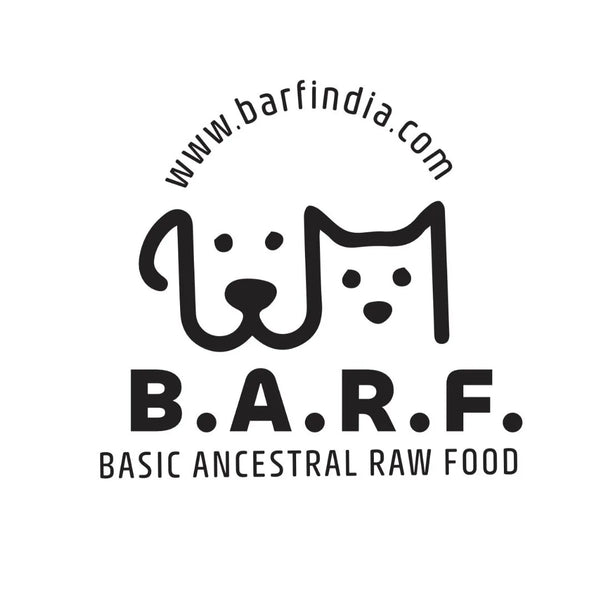
The Foundation of Health: Why Raw Bones Are Essential for Your Dog's Diet
Share
Introduction
When it comes to the health and well-being of our furry companions, proper nutrition plays a crucial role. As pet owners, we are constantly bombarded with information about what to feed our dogs. Amidst the sea of options, one often overlooked but incredibly beneficial component of a dog's diet is raw bones. Contrary to popular belief, raw bones are not only safe but also essential for your dog's overall health. In this blog, we'll delve into the reasons why raw bones should be a fundamental part of your dog's diet.
Understanding the Anatomy of Dogs
Before we delve into the benefits of raw bones, it's essential to understand the anatomy and physiology of dogs. Dogs are carnivores, which means they have a biological need for meat in their diet. Their teeth, jaws, and digestive systems are specifically designed for tearing and digesting raw meat and bones. Unlike humans, who have flat molars for grinding plant matter, dogs have sharp teeth and powerful jaw muscles for tearing flesh and crushing bones.
The Benefits of Raw Bones
-
Dental Health: One of the most significant benefits of raw bones for dogs is their effect on dental health. Chewing on raw bones helps scrape away plaque and tartar from your dog's teeth, promoting good oral hygiene and preventing dental issues such as gum disease and tooth decay. The gnawing action also stimulates the gums, promoting blood flow and overall gum health.
-
Mental Stimulation: Dogs are natural chewers, and providing them with raw bones satisfies their instinctual urge to chew. Chewing on bones provides mental stimulation and helps alleviate boredom, anxiety, and destructive behavior. It can also help prevent excessive barking and digging, as chewing serves as a calming activity for dogs.
-
Nutritional Benefits: Raw bones are rich in essential nutrients that are beneficial for your dog's overall health. Bones are an excellent source of calcium, phosphorus, and other minerals vital for bone health, muscle function, and overall growth and development. Additionally, the marrow inside bones is packed with nutrients, including vitamins A, D, and K, as well as omega-3 fatty acids, which support immune function, skin health, and coat shine.
-
Digestive Health: Contrary to common misconceptions, raw bones are safe for dogs to consume and are actually beneficial for their digestive health. Raw bones are easily digestible and provide natural dietary fiber, which helps regulate bowel movements and prevent constipation. Chewing on bones also promotes the production of saliva, which contains enzymes that aid in the digestion process.
-
Joint Health: The cartilage and connective tissue found in raw bones provide valuable nutrients that support joint health and mobility in dogs. Regular consumption of raw bones can help prevent or alleviate conditions such as arthritis and hip dysplasia, which are common in aging dogs. The natural glucosamine and chondroitin found in bones help maintain the integrity of joint cartilage and reduce inflammation.
-
Weight Management: Chewing on raw bones can also help manage your dog's weight by providing a healthy outlet for excess energy and reducing the risk of overeating. The act of chewing on bones requires physical exertion, which can help burn calories and maintain muscle tone. Additionally, the high protein content in bones helps dogs feel fuller for longer, reducing the likelihood of overeating or begging for unhealthy treats.
How to Safely Feed Raw Bones to Your Dog
While raw bones offer numerous health benefits for dogs, it's essential to follow proper safety guidelines when feeding them to your furry friend:
-
Choose the Right Size: Select raw bones that are appropriately sized for your dog's breed and chewing habits. Avoid small bones that could pose a choking hazard or splinter into sharp fragments.
-
Supervise Chew Sessions: Always supervise your dog while they are chewing on raw bones to ensure they chew safely and do not ingest large chunks or sharp fragments. Remove the bone if it becomes small enough to swallow whole.
-
Rotate Bones Regularly: Rotate different types of raw bones in your dog's diet to provide variety and prevent boredom. Avoid feeding weight-bearing bones such as large beef femurs, as they can be too dense and may cause dental fractures.
-
Store Bones Properly: Store raw bones in the refrigerator or freezer to prevent bacterial growth and spoilage. Thaw frozen bones in the refrigerator before feeding them to your dog, and discard any leftover bones after a few days.
-
Consider Your Dog's Health: If your dog has dental issues, a sensitive stomach, or a history of gastrointestinal problems, consult with your veterinarian before introducing raw bones into their diet. They can provide guidance on the appropriate types and quantities of bones for your dog.
Conclusion
In conclusion, raw bones are a natural and nutritious addition to your dog's diet that offer a wide range of health benefits. From promoting dental health and mental stimulation to providing essential nutrients and supporting digestive and joint health, raw bones play a vital role in keeping your furry friend happy and healthy. By following proper safety guidelines and consulting with your veterinarian, you can safely incorporate raw bones into your dog's diet and help them thrive for years to come.
